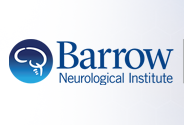Arachnoid and dural reflections
Document Type
Article
Abstract
The dura mater is the major gateway for accessing most extra-axial lesions and all intra-axial lesions of the central nervous system. It provides a protective barrier against external trauma, infections, and the spread of malignant cells. Knowledge of the anatomical details of dural reflections around various corners of the skull bases provides the neurosurgeon with confidence during transdural approaches. Such knowledge is indispensable for protection of neurovascular structures in the vicinity of these dural reflections. The same concept is applicable to arachnoid folds and reflections during intradural excursions to expose intra- and extra-axial lesions of the brain. Without a detailed understanding of arachnoid membranes and cisterns, the neurosurgeon cannot confidently navigate the deep corridors of the skull base while safely protecting neurovascular structures. This chapter covers the surgical anatomy of dural and arachnoid reflections applicable to microneurosurgical approaches to various regions of the skull base.
Medical Subject Headings
Arachnoid (anatomy & histology, blood supply); Cadaver; Dura Mater (blood supply); Humans; Meninges (blood supply); Skull Base (anatomy & histology, blood supply)
Publication Date
1-1-2020
Publication Title
Handbook of clinical neurology
ISSN
0072-9752
Volume
169
First Page
17
Last Page
54
PubMed ID
32553288
Digital Object Identifier (DOI)
10.1016/B978-0-12-804280-9.00002-0
Recommended Citation
Tayebi Meybodi, Ali; Tabani, Halima; and Benet, Arnau, "Arachnoid and dural reflections" (2020). Neurosurgery. 2115.
https://scholar.barrowneuro.org/neurosurgery/2115


